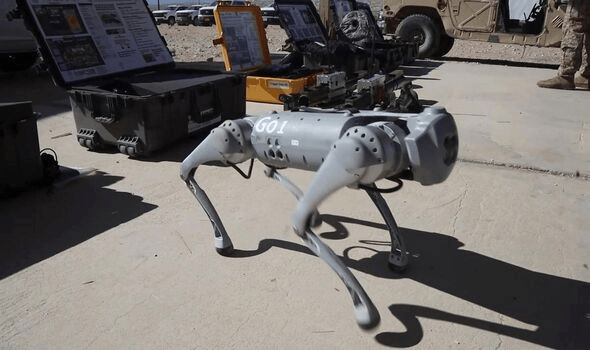In a daring display of innovation, the U.S. Marines have harnessed the power of modern technology by pairing a rocket launcher with an unexpected ally – a “robotic goat.” This unusual alliance took center stage in a tactical training exercise conducted on September 9, 2023, revealing how the future of warfare may be shaped by autonomous systems and unorthodox partners.
This unconventional partnership involved equipping the Chinese-made “Unitree Go1,” often referred to as a “robotic dog” but intriguingly named a “robotic goat” for reasons unknown, with an M72 Light Anti-tank Weapon (LAW) rocket-propelled grenade launcher (RPG). The M72 LAW, a compact, lightweight, and disposable weapon, has been a steadfast component of the U.S. military’s arsenal since 1963. It boasts a firing range of up to 3,280 feet, with its optimal effectiveness at a distance of 650 feet.

The choice of the M72 LAW for this innovative experiment is noteworthy, as it was initially designed for urban combat situations, where the environment is often riddled with obstacles and engagements occur at close quarters. By marrying this proven weapon with a remotely operated robot like the “Unitree Go1,” the U.S. Marines aimed to explore uncharted territory in military strategy.
The essential advantage of this setup is the capacity for remote operation. Aaron Safadi, a Tactical Training and Exercise Control group member, elaborated on this, explaining that the system allows Marines to maintain a safe distance from the weapon while controlling it remotely. In essence, this approach minimizes human exposure to danger while still ensuring precise control over firepower.

To adapt the “robotic goat” for this unique role, a metal box was affixed to its back, housing the firing controls and safety switches. After each RPG launch, the used launcher can be effortlessly replaced with a new M72 LAW, streamlining the process for rapid reengagement.
The “robotic goat” is guided remotely using a controller reminiscent of a video game setup during operations. Equipped with cameras for “eyes,” the robot is an advanced scouting tool capable of assessing the battlefield’s dynamic conditions. When strategically positioned, the rocket can be launched using the remote controller. After the engagement, the robot can linger on-site to confirm mission success before proceeding further or returning to the base for rearming.
This new approach is innovative in confronting heavily armored targets like tanks and introduces tactical possibilities for urban warfare and underground operations. The “robotic goat” and its versatile capabilities could revolutionize how armed forces operate in complex, high-risk environments as military strategies evolve.


